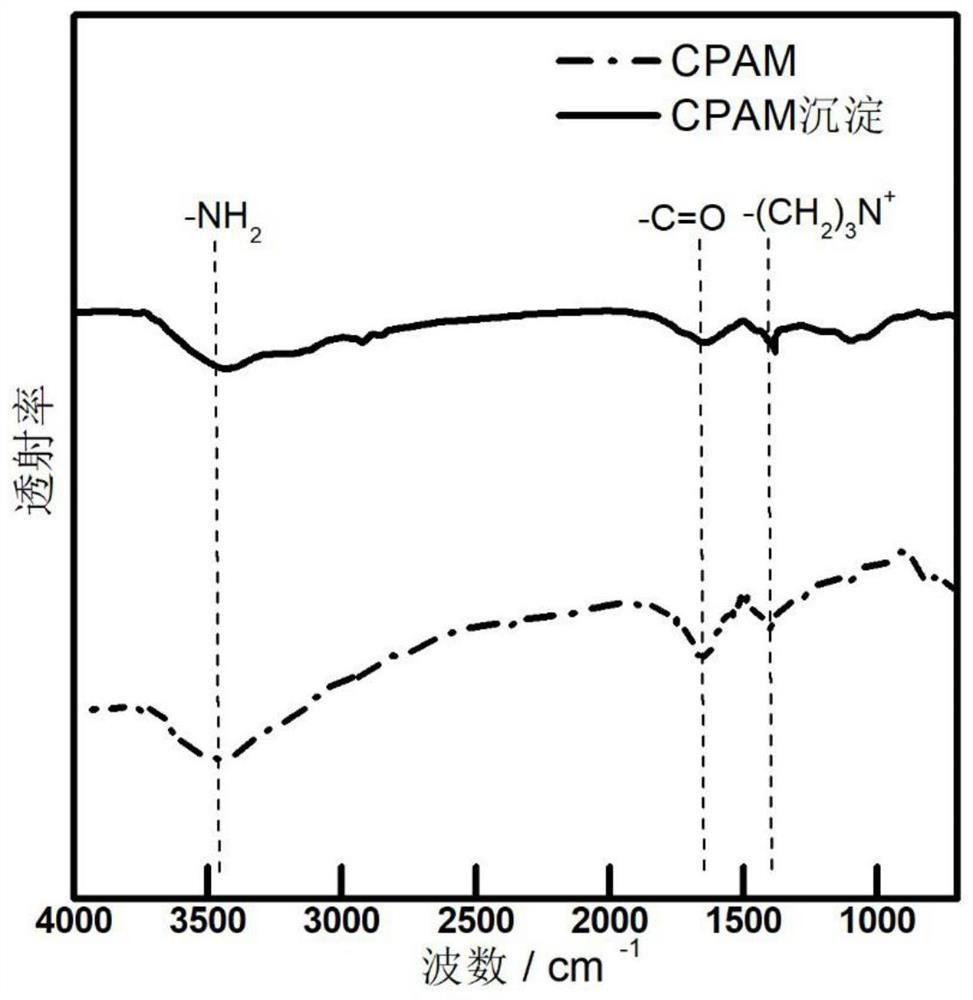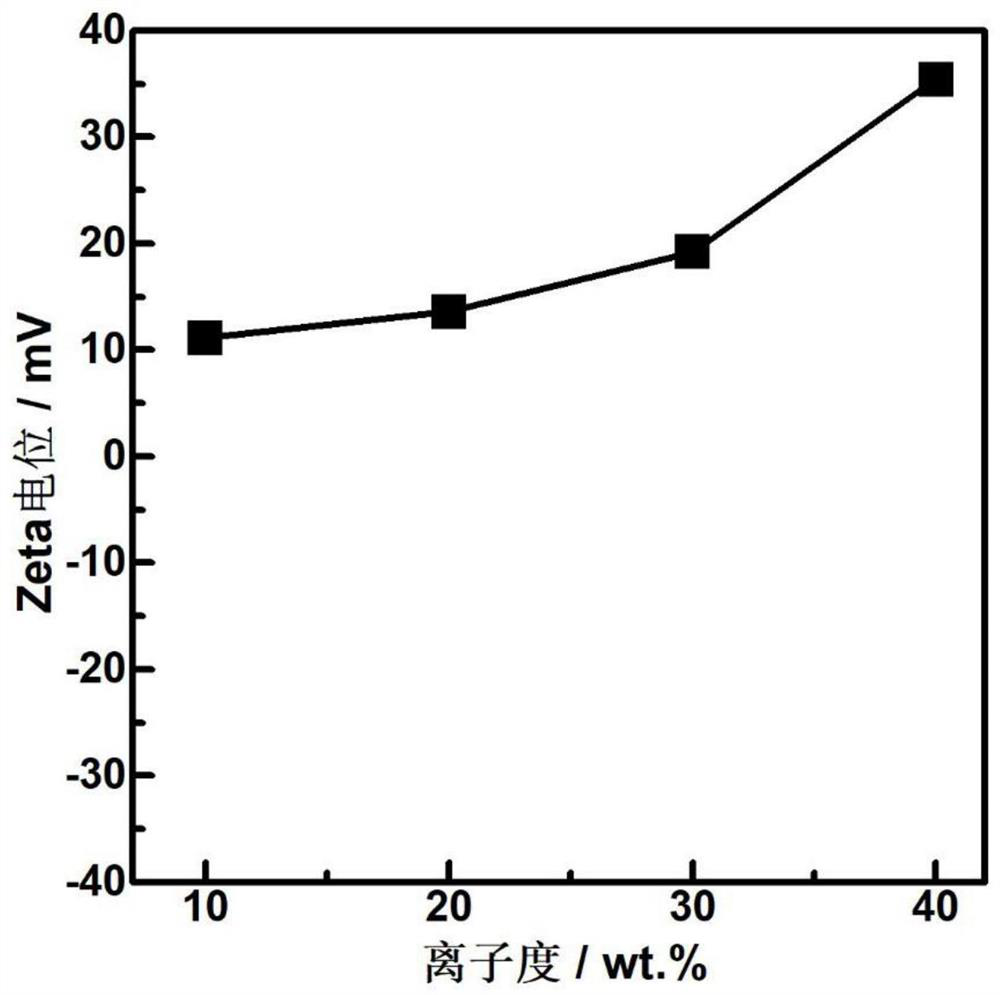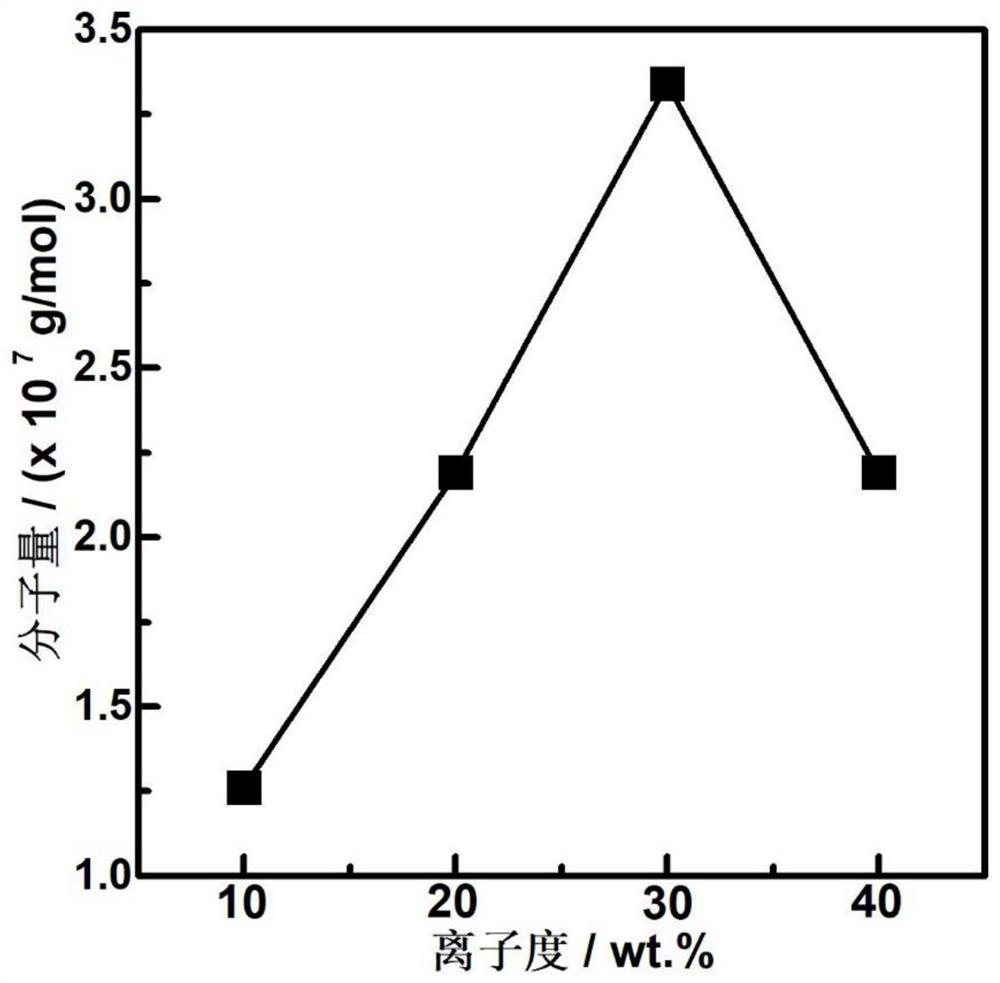A kind of cationic polyacrylamide and its application
A polyacrylamide, cationic technology, used in flocculation / sedimentation water / sewage treatment and other directions
- Summary
- Abstract
- Description
- Claims
- Application Information
AI Technical Summary
Problems solved by technology
Method used
Image
Examples
Embodiment 1
[0042]Add 21g of acrylamide, 2.33g of dimethyl diallyl ammonium chloride, 0.1g of urea, and 0.1g of EDTA into a 1L three-necked flask in sequence, and dissolve them in 70mL of deionized water to prepare a salt solution A, which is protected by nitrogen gas. , mechanically stirred at a speed of 300r / min for 30min. Prepare Initiator B containing 0.0053 g ammonium persulfate, 0.0125 g sodium borohydride, 0.0125 g azobisisobutylamidine hydrochloride and 1.5 mL deionized water. The prepared initiator B was added dropwise to the salt solution A with a peristaltic pump, and the dropping time was 30 minutes. After the dropwise addition, the reaction temperature was raised to 50°C, and the reaction was continued for 2-3 hours until the solution became a transparent colloid. The jelly sample was taken out and placed in an evaporating dish and dried at a constant temperature of 75° C. to a constant weight to obtain a cationic polyacrylamide (10-CPAM) with an ionicity of 10 wt.%.
[004...
Embodiment 2
[0046] Add 21g of acrylamide, 5.25g of dimethyl diallyl ammonium chloride, 0.1g of urea, and 0.1g of EDTA into a 1L three-necked flask in sequence, and dissolve them in 70mL of deionized water to prepare a salt solution A, which is protected by nitrogen gas. , mechanically stirred at a speed of 300r / min for 30min. Prepare Initiator B containing 0.0053 g ammonium persulfate, 0.0125 g sodium borohydride, 0.0125 g azobisisobutylamidine hydrochloride and 1.5 mL deionized water. The prepared initiator B was added dropwise to the salt solution A with a peristaltic pump, and the dropping time was 30 minutes. After the dropwise addition, the reaction temperature was raised to 50°C, and the reaction was continued for 2-3 hours until the solution became a transparent colloid. Take out the jelly sample and place it in an evaporating dish and dry it at a constant temperature of 75°C to a constant weight to obtain a cationic polyacrylamide with an ionization of 20wt.%.
Embodiment 3
[0048] Add 21g of acrylamide, 9g of dimethyl diallyl ammonium chloride, 0.1g of urea, and 0.1g of EDTA in sequence in a 1L three-necked flask, and dissolve them in 70mL of deionized water to prepare a salt solution A, which is protected by nitrogen gas. Stir mechanically at a speed of 300r / min for 30min. Prepare Initiator B containing 0.0053 g ammonium persulfate, 0.0125 g sodium borohydride, 0.0125 g azobisisobutylamidine hydrochloride and 1.5 mL deionized water. The prepared initiator B was added dropwise to the salt solution A with a peristaltic pump, and the dropping time was 30 minutes. After the dropwise addition, the reaction temperature was raised to 50°C, and the reaction was continued for 2-3 hours until the solution became a transparent colloid. Take out the jelly sample and place it in an evaporating dish and dry it at a constant temperature of 75°C until it reaches a constant weight to obtain a cationic polyacrylamide with an ion content of 30wt.%.
PUM
| Property | Measurement | Unit |
|---|---|---|
| degree of polymerization | aaaaa | aaaaa |
| degree of polymerization | aaaaa | aaaaa |
Abstract
Description
Claims
Application Information
 Login to View More
Login to View More - R&D
- Intellectual Property
- Life Sciences
- Materials
- Tech Scout
- Unparalleled Data Quality
- Higher Quality Content
- 60% Fewer Hallucinations
Browse by: Latest US Patents, China's latest patents, Technical Efficacy Thesaurus, Application Domain, Technology Topic, Popular Technical Reports.
© 2025 PatSnap. All rights reserved.Legal|Privacy policy|Modern Slavery Act Transparency Statement|Sitemap|About US| Contact US: help@patsnap.com



